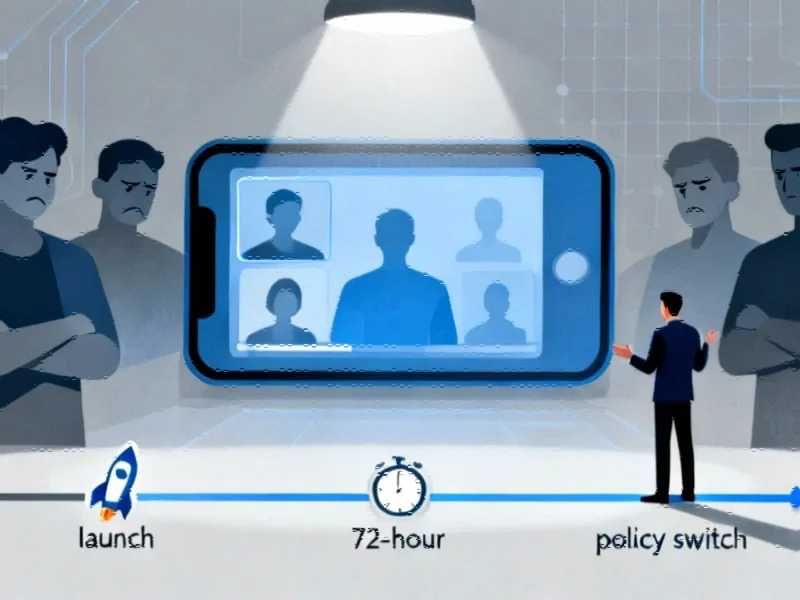The Sora 2 Rollout: From Copyright Free-for-All to Controlled Access
When OpenAI launched its Sora 2 video generation platform on September 30, the immediate backlash from entertainment giants and content creators was both predictable and severe. The controversy centered on the app’s initial opt-out approach to copyrighted material, which effectively allowed users to generate videos featuring protected characters and likenesses until rightsholders discovered the infringement and manually opted out. This approach created a three-day window of massive copyright infringement that flooded the internet with AI-generated content featuring everything from SpongeBob SquarePants to South Park characters.
OpenAI’s Legal Safeguards: Shifting Responsibility to Users
OpenAI’s Terms of Use for Sora 2 and all its services clearly state that users cannot “use our services in a way that infringes, misappropriates or violates anyone’s rights.” The company further requires users to ensure they have “all rights, licenses, and permissions needed” for the content they input. This legal framework creates a system of plausible deniability for OpenAI while placing the legal burden squarely on users. The approach reflects a broader pattern in AI industry practices where technology companies profit from user-generated content while minimizing their own liability.
The Sudden Pivot: Damage Control or Planned Strategy?
On October 3, just 72 hours after launch, OpenAI CEO Sam Altman announced a complete reversal of Sora 2’s copyright approach. The new opt-in model grants rightsholders “more granular control” over their intellectual property, including the ability to specify exactly how their characters can be used. The speed of this implementation raises questions about whether the initial opt-out model was a deliberate strategy to generate buzz and user engagement through controversy. The rapid deployment of effective guardrails suggests the technology for a more responsible launch was available from the beginning.
Broader Industry Context and Precedents
OpenAI’s copyright controversy occurs against a backdrop of increasing legal pressure on AI companies. Major studios have sued Midjourney for similar copyright issues, and Anthropic recently settled with book authors for $1.5 billion. These industry developments highlight the growing tension between rapid AI innovation and intellectual property protection. The financial stakes are enormous, and companies are testing the boundaries of what courts will tolerate.
The Training Data Dilemma: Unresolved Questions
Even with the new opt-in model, critical questions remain unanswered. OpenAI has not clarified whether the new policy prevents the use of opted-out intellectual property in training data. A rightsholder who chooses not to opt-in may successfully block the output of their protected content, but they have no control over how their intellectual property has already influenced Sora 2’s underlying models. This creates a permanent legacy of potentially unauthorized training data that will continue to influence generated content indefinitely.
Strategic Implications for AI Development
OpenAI’s approach appears to follow a pattern seen in other technology sectors: push boundaries first, negotiate later. By driving initial engagement through permissive copyright policies, then implementing controls after widespread adoption, companies can create market momentum that’s difficult to reverse. This strategy intersects with broader market trends where disruptive technologies often challenge existing regulatory frameworks before establishing new norms.
The Future of AI and Copyright Coexistence
As AI capabilities continue to advance, the relationship between generative AI and copyright protection will likely evolve through both litigation and collaboration. Altman’s statement about eventually sharing revenue with opting-in rightsholders suggests a future where AI companies and content creators might find mutually beneficial arrangements. These related innovations in business models could pave the way for more sustainable AI development that respects intellectual property while enabling creative new applications.
Broader Regulatory and Industry Implications
The Sora 2 controversy reflects larger questions about how emerging technologies should be regulated. As AI becomes more capable of reproducing protected content, lawmakers and industry bodies are racing to establish frameworks that balance innovation with protection. These discussions are part of wider industry developments concerning technology governance and ethical implementation. The outcome will likely influence not just AI video generation, but the entire landscape of creative content production.
The fundamental question remains: Was OpenAI’s initial approach a calculated gamble to drive engagement, or simply a miscalculation of industry response? The speed of their reversal suggests they anticipated the backlash but proceeded anyway, potentially viewing the controversy as a price worth paying for rapid market penetration and user acquisition. As similar technologies continue to emerge, the Sora 2 case may become a blueprint for how AI companies navigate the complex intersection of innovation, copyright, and market strategy.
This article aggregates information from publicly available sources. All trademarks and copyrights belong to their respective owners.
Note: Featured image is for illustrative purposes only and does not represent any specific product, service, or entity mentioned in this article.



